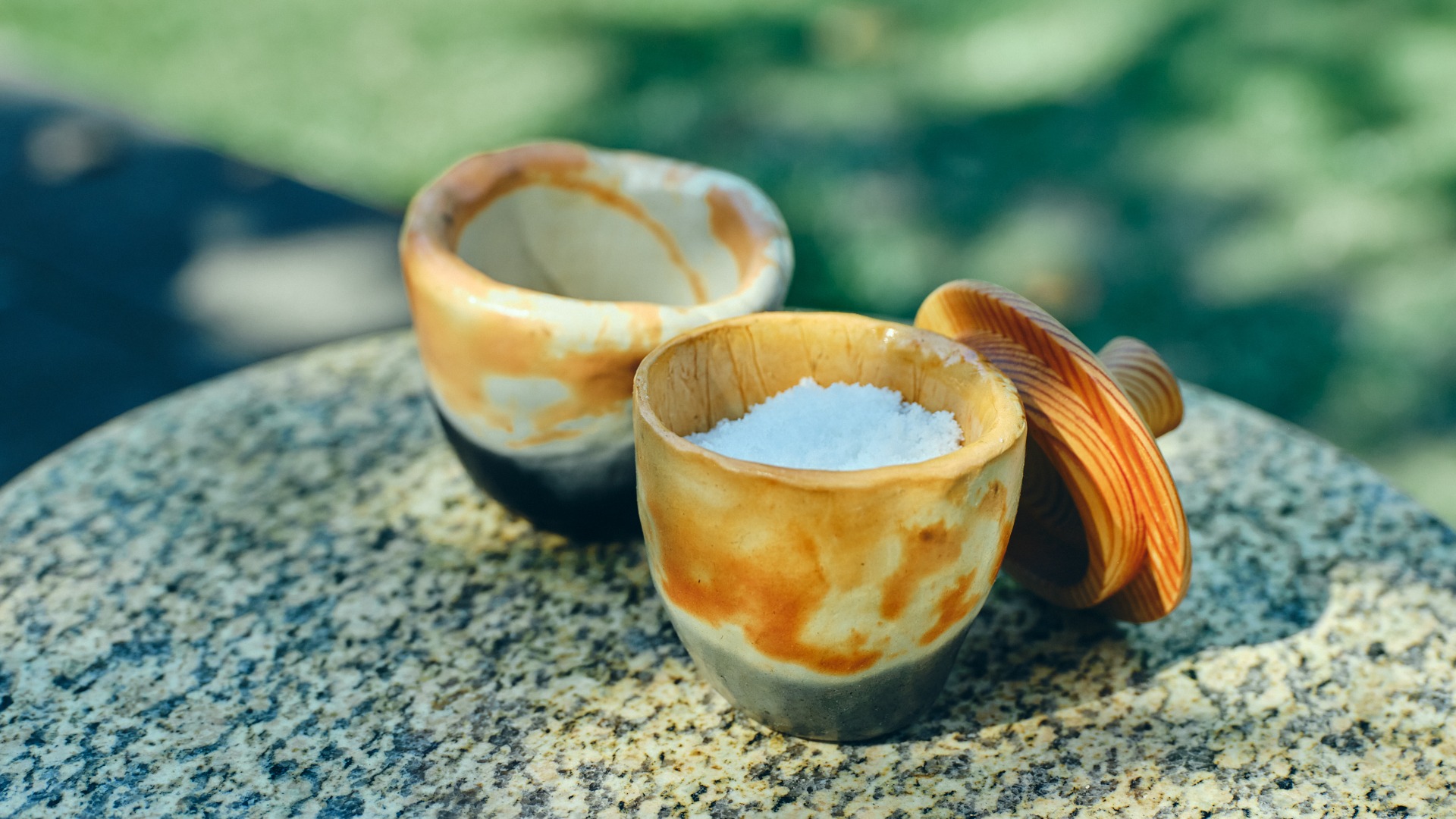Introduction
Japan’s bamboo forests are nothing short of magical, enchanting visitors with their serene beauty and cultural significance. From the whispering of the leaves to the soft rustle of the stalks, these lush green havens offer a unique escape into nature that changes with the seasons. Whether you’re strolling through the towering groves in spring, basking in the cool shade during summer, marveling at the autumn hues, or enjoying the tranquil snow-covered scenes in winter, each visit promises a new experience. Bamboo is not just a plant in Japan; it holds deep cultural roots, symbolizing resilience and purity. It’s intertwined with art, crafts, and even traditional practices, making these forests a vital part of Japan’s eco-tourism landscape.
Discovering Japan’s Most Enchanting Bamboo Forests
When it comes to bamboo forest locations in Japan, a few spots stand out as must-visit destinations. The Arashiyama Bamboo Grove in Kyoto is perhaps the most famous, drawing in travelers from all corners of the globe. Its towering bamboo stalks create a breathtaking pathway that feels like stepping into another world. Just nearby, the Sagano Bamboo Forest offers a quieter, equally stunning experience, where you can get lost in the beauty of nature without the crowds.
But the allure of Japan’s bamboo forests doesn’t stop there. Each forest boasts its unique charm and features. For instance, the Sagano Bamboo Forest is renowned for its picturesque walking trails that wind through dense bamboo groves, providing a peaceful retreat for those seeking solitude. On the other hand, the Kyoto Bamboo Garden is a delightful spot for photography enthusiasts, especially during the cherry blossom season when the contrast between the pink blossoms and green bamboo creates a stunning visual feast.
As you explore these enchanting bamboo forests, you’ll discover that each location offers its own unique experiences and insights into Japan’s rich cultural tapestry. Whether you’re an eco-tourist looking to immerse yourself in nature or a traveler eager to learn about the historical significance of bamboo in Japanese culture, these forests promise a memorable adventure.
Arashiyama Bamboo Grove: A Must-Visit Natural Wonderland
The Arashiyama Bamboo Grove is a true gem in Kyoto, captivating visitors with its towering stalks that sway gently in the breeze. This iconic bamboo forest has been a source of inspiration for artists and poets for centuries, and it’s easy to see why. As you wander through the grove, the sunlight filters through the leaves, casting a magical glow on the path beneath your feet.
But Arashiyama is more than just a bamboo grove. The area is steeped in history and culture, with nearby attractions that enhance your visit. Just a short walk away is the Tenryu-ji Temple, a UNESCO World Heritage site that showcases stunning gardens and traditional architecture. Don’t forget to check out the Arashiyama Monkey Park, where you can meet playful monkeys amidst breathtaking views of the surrounding landscape.
For those looking to immerse themselves in the natural beauty of the area, the Arashiyama Bamboo Grove offers various paths for exploration. Each turn reveals new perspectives of the bamboo, making it a photographer’s paradise. Early mornings or late afternoons are particularly magical times to visit, as the soft light enhances the ethereal quality of the forest.
Seasonal Splendor: Experiencing Japan’s Bamboo Forests Throughout the Year
Every season in Japan brings its own magic, and the bamboo forests are no exception. Whether you’re a fan of blooming cherry blossoms, lush greenery, vibrant autumn leaves, or serene snow-covered landscapes, there’s a perfect time for you to explore these enchanting spots. Let’s take a closer look at what each season has to offer!
Spring: A Symphony of Cherry Blossoms and Fresh Greenery
Spring is a breathtaking time to visit the bamboo forests, especially with the stunning backdrop of cherry blossoms. As the delicate pink blooms burst into life, they create a picturesque contrast against the vibrant green bamboo. The Arashiyama Bamboo Grove becomes even more magical as visitors stroll through the paths lined with both cherry trees and towering bamboo. Be sure to bring your camera; this is the season for bamboo forest photography in Japan that you won’t want to miss!
Summer: A Cool Retreat in Lush Landscapes
As the summer heat sets in, the bamboo forests offer a refreshing escape. The tall stalks provide a natural canopy, creating a cool and serene environment. Take a leisurely walk through the Sagano Bamboo Forest and listen to the soft rustling of leaves as a gentle breeze flows through. This is also a great time for forest bathing, a practice that encourages you to immerse yourself in nature and enjoy the calming effects of the forest.
Autumn: A Tapestry of Stunning Fall Colors
Autumn transforms the bamboo forests into a canvas of warm hues. The rich golds, reds, and oranges of the surrounding trees create a stunning backdrop against the evergreen bamboo. The Kyoto Bamboo Garden is particularly striking during this time, making it a hotspot for photographers. Capture the beauty of the changing leaves and the unique interplay of colors; it’s a sight that will linger in your memory long after your visit!
Winter: Tranquil Snow-Covered Scenes
Winter brings a serene stillness to the bamboo forests, especially when a fresh layer of snow blankets the ground. The sight of snow-laden bamboo stalks is nothing short of enchanting. The Arashiyama Bamboo Grove takes on a peaceful vibe, perfect for those seeking solitude and reflection. Bundle up and enjoy the quiet beauty of the forest; it’s a magical experience that feels like stepping into a winter wonderland!
Bamboo Forest Hiking: Trails to Tranquility
For those who love to lace up their hiking boots and explore, Japan’s bamboo forests offer some of the best trails for nature walks. The combination of fresh air, stunning scenery, and the calming presence of bamboo makes for a perfect hiking experience. Here are some of the best trails to consider:
Popular Hiking Trails
The Arashiyama Bamboo Grove has well-marked paths that lead you through its enchanting landscape. You can take a short stroll or opt for a longer hike that takes you to nearby attractions like the Tenryu-ji Temple. If you’re looking for a less crowded experience, the Sagano Bamboo Forest offers quieter trails that wind through the lush greenery.
For the adventurous, consider the Takao Mountain Trails, which lead you through bamboo groves and offer breathtaking views of the surrounding mountains. Don’t forget to pack some snacks and water, and take your time soaking in the beauty of nature!
Tips for First-Time Hikers
If you’re new to hiking, here are some tips to ensure you have a great experience:
- Wear Comfortable Shoes: Good hiking shoes are essential for navigating uneven terrain.
- Stay Hydrated: Bring plenty of water, especially during warmer months.
- Follow Trail Signs: Stick to marked paths to protect the delicate ecosystem.
- Capture the Moment: Don’t forget your camera to capture the stunning views!
Capturing the Beauty: Bamboo Forest Photography Tips
Whether you’re a budding photographer or just love snapping pictures on your travels, the bamboo forests provide a fantastic backdrop for stunning photos. Here are some tips to help you capture the beauty of these natural wonders:
Best Practices for Photography
1. Golden Hour: The best time to take photos is during the golden hour, shortly after sunrise or before sunset. The soft light enhances the colors and creates beautiful shadows.
2. Experiment with Angles: Don’t be afraid to get low or try different perspectives. Shooting up towards the towering bamboo can create a dramatic effect.
3. Incorporate Foreground Elements: Use pathways or other elements in the foreground to add depth to your photos.
4. Focus on Details: Capture the intricate details of bamboo leaves and stalks. Close-ups can reveal the beauty that often goes unnoticed.
5. Editing: Post-processing can enhance your images. Play with contrast and saturation to make the greens pop!
Cultural Significance of Bamboo in Japan
Bamboo is more than just a beautiful plant in Japan; it holds deep cultural significance. Historically, bamboo has been used for various purposes, from crafting tools and utensils to building structures. Its strength and flexibility symbolize resilience and purity in Japanese culture.
Bamboo in Art and Crafts
Many traditional Japanese arts incorporate bamboo, including bamboo crafts like basket weaving and the creation of intricate bamboo art pieces. Visitors to the bamboo forests often find workshops where they can learn about these crafts and even try their hand at making their own bamboo creations!
Festivals celebrating bamboo culture are also common, showcasing the plant’s importance in Japanese heritage. The Takeno Matsuri in Kyoto is a fantastic event that highlights bamboo’s role in local traditions, featuring performances, food stalls, and beautiful bamboo decorations.
Eco-tourism and Conservation in Bamboo Forests
With the growing interest in eco-tourism, Japan’s bamboo forests are at the forefront of sustainable travel practices. Many visitors are keen to explore these natural wonders while minimizing their impact on the environment.
Sustainable Tourism Practices
When visiting bamboo forests, consider the following tips to support conservation efforts:
- Stay on Designated Trails: This helps protect the delicate ecosystem and prevents damage to the bamboo.
- Leave No Trace: Carry out any trash and avoid picking plants or disturbing wildlife.
- Support Local Businesses: Choose to eat at local restaurants and buy souvenirs from local artisans to contribute to the community.
Many organizations are dedicated to preserving these beautiful landscapes, and visitors can often participate in conservation activities or educational programs to learn more about the importance of bamboo in the ecosystem.
Outdoor Activities Beyond the Bamboo: What to Do
While the bamboo forests are undoubtedly a highlight, there are plenty of other outdoor activities to enjoy nearby. Here are some suggestions to enhance your experience:
Forest Bathing
Forest bathing, or Shinrin-yoku, is a popular practice in Japan that encourages visitors to immerse themselves in nature. Take a moment to breathe deeply, listen to the sounds of the forest, and soak in the tranquility of your surroundings. It’s a perfect way to recharge and connect with nature.
Cultural Workshops
Many areas near the bamboo forests offer cultural workshops where you can learn traditional crafts, such as bamboo weaving or tea ceremonies. These hands-on experiences provide a deeper understanding of Japanese culture and create lasting memories.
Guided Tours
Consider joining a guided tour that combines visits to the bamboo forests with other local attractions. This way, you can discover hidden gems and learn about the history and ecology of the area from knowledgeable guides.
Culinary Delights: Savoring Local Flavors Near Bamboo Forests
No trip to Japan is complete without indulging in the local cuisine! The areas surrounding the bamboo forests are home to some delicious culinary delights. Here are a few must-try dishes:
Local Specialties
1. Kaiseki: A traditional multi-course meal that showcases seasonal ingredients. Look for restaurants that offer kaiseki dining for an authentic experience.
2. Yudofu: A simple yet flavorful dish made from tofu simmered in a light broth, often enjoyed in the serene settings of Kyoto.
3. Matcha Sweets: Don’t miss out on trying matcha-flavored treats, from ice cream to cakes, that reflect the region’s tea culture.
After a day of exploring the bamboo forests, treat yourself to a meal at a local eatery. Many restaurants offer outdoor seating that allows you to enjoy the beauty of nature while savoring delicious food!
Festivals and Events Celebrating Bamboo Culture
Notable Festivals
The Bamboo Lantern Festival in Kyoto is a magical event where thousands of lanterns made from bamboo illuminate the night, creating a stunning spectacle. Visitors can participate in workshops and enjoy traditional performances.
Another exciting event is the Yasaka Shrine’s Hanami Festival, where locals gather to enjoy cherry blossom viewing alongside bamboo art displays. These festivals highlight the beauty of bamboo and its connection to nature and community.
Practical Information for Travelers: Tips and Guidelines
Planning a visit to Japan’s bamboo forests? Here are some essential tips to help make your trip smooth and enjoyable:
Travel Tips
- Opening Hours: Most bamboo forests are accessible year-round, but check for any seasonal events or maintenance closures.
- Transportation: Public transport is convenient in Japan. Trains and buses can take you close to many bamboo forest locations.
- Safety Guidelines: Be mindful of your surroundings, especially while hiking. Stay on the paths and respect wildlife.
Frequently Asked Questions
Have questions? Here are some common queries:
- Can I bring my pet? Many bamboo forests have pet-friendly areas, but check local regulations.
- Are there guided tours available? Yes! Many local operators offer guided tours that enhance your experience.
- What should I wear? Comfortable clothing and sturdy shoes are recommended for hiking and walking.
Day-by-Day Itinerary: A Perfect Bamboo Forest Getaway
Planning a multi-day trip focused on Japan’s bamboo forests? Here’s a suggested itinerary to help you make the most of your visit:
Day 1: Arrival in Kyoto
Arrive in Kyoto and settle into your accommodation. Spend the afternoon exploring the Arashiyama Bamboo Grove and nearby attractions like the Tenryu-ji Temple. Enjoy dinner at a local restaurant, savoring traditional Kyoto cuisine.
Day 2: Sagano Bamboo Forest and Cultural Experiences
Head to the Sagano Bamboo Forest for a morning hike. Afterward, participate in a bamboo weaving workshop to learn about this traditional craft. In the evening, consider attending a local festival or event celebrating bamboo culture.
Day 3: Nature and Culinary Delights
Spend your final day enjoying the serenity of the bamboo forests. Consider a guided tour that combines nature walks with visits to local eateries for a taste of seasonal dishes. Conclude your trip with a visit to a tea house for matcha sweets!
Fun Facts About Japan’s Bamboo Forests
Did you know that bamboo can grow up to three feet in a single day? Here are some fun facts to enhance your knowledge of these incredible plants:
- Bamboo Species: Japan is home to over 100 species of bamboo, each with its unique characteristics.
- Symbolism: In Japanese culture, bamboo represents strength, flexibility, and resilience.
- Longevity: Bamboo can live for over 120 years, with some species reaching heights of up to 100 feet!
Safety and Health Guidelines for Nature Explorers
While exploring the bamboo forests, it’s important to prioritize your safety and well-being. Here are some guidelines to keep in mind:
- Stay Hydrated: Always carry water, especially during warmer months.
- Watch Your Step: Be cautious on uneven paths to avoid slips and falls.
- Respect Wildlife: Keep a safe distance from animals and do not feed them.
Commonly Asked Questions (FAQs) about Bamboo Forests
Here are some frequently asked questions that travelers often have regarding bamboo forests:
- Are there entrance fees? Most bamboo forests are free to enter, but some may have fees for guided tours or workshops.
- Can I take photos? Yes! Photography is encouraged, but be respectful of other visitors.
- What’s the best time to visit? Each season offers a unique experience, so choose based on your preferences!
Exploring Japan’s bamboo forests is an adventure filled with beauty, culture, and tranquility. Whether you’re wandering through the iconic Arashiyama Bamboo Grove or discovering the hidden gems of the Sagano Bamboo Forest, each visit promises a memorable experience. So pack your bags, grab your camera, and get ready to create unforgettable memories in these enchanting natural wonders!





















